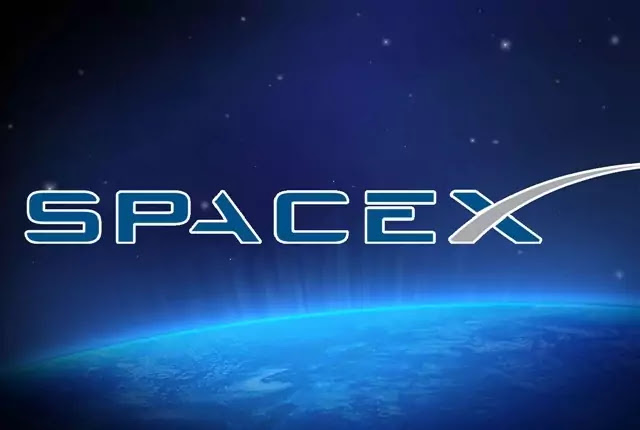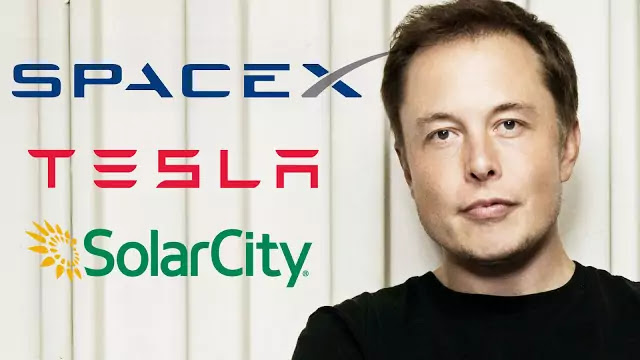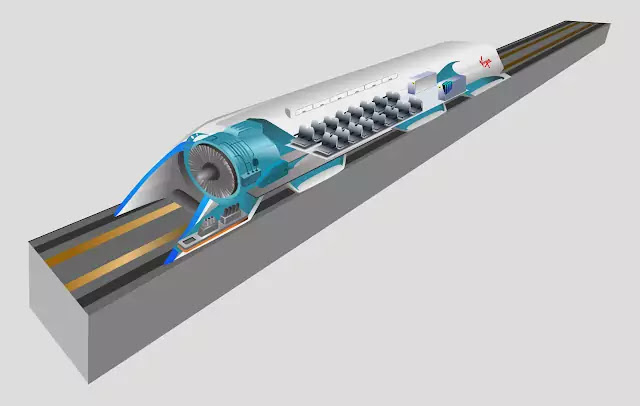ELON MUSK: BIOGRAPHY & FULL SUCCESS STORY
Elon Musk was born on June 28, 1971, in Pretoria, South Africa. His mother, Maye, was a Canadian-born model and dietician. His father, Errol, was an electromechanical engineer born in South Africa. A brother and sister joined the family soon after Elon was born. Compared with his siblings, Elon was quiet. His mother would later say that his introversion, especially compared with his more outgoing siblings, made her fear that he might be deaf. When Musk was 10, his parents divorced and Elon lived mostly with his father, who moved around South Africa. It was a difficult time, as Errol was reportedly tough with his children to the point of abuse, often lecturing Musk and his brother for hours.
Bullied as a Child
Musk’s intellectual aptitude did him few favors as a child. He found few friends in the tough-minded Afrikaner culture he encountered in school.
"I had a terrible upbringing. I had a lot of adversity growing up. One thing I worry about with my kids is they don't face enough adversity," he would later say in an interview.
Musk attended the English-speaking Waterkloof House Preparatory School, and later graduated from Pretoria Boys High School. The years were lonely and brutal, from his descriptions.
“They got my best friend to lure me out of hiding so they could beat me up. And that hurt,” Musk said. “For some reason, they decided that I was it, and they were going to go after me nonstop. That’s what made growing up difficult. For a number of years, there was no respite. You get chased around by gangs at school who tried to beat the (expletive) out of me, and then I’d come home, and it would just be awful there as well.”
If there was a point of bright escape for Musk, it was technology. When he was only 10, he became acquainted with programming via the Commodore VIC-20, an inexpensive home computer. Before long, he had become proficient enough to create Blastar – a video game in the style of Space-Invaders. He sold the BASIC code for the game to a magazine called PC and Office Technology for $500.
At 17, Musk moved to Canada to avoid serving in the South African military, whose main duty in the late 1980s was enforcing apartheid. He would later obtain Canadian citizenship through his mother.
After emigrating to Canada, Musk enrolled in Queen's University in Kingston, Ontario. It was there that he met Justine Wilson, an aspiring writer. They would marry and have five sons together, twins and triplets, before divorcing in 2008.
Elon Musk's Education
After two years at Queen's University, Musk transferred to the University of Pennsylvania. He took on two majors, but his time there wasn’t all work and no play. With a fellow student, he bought a 10-bedroom fraternity house, which they used as an ad hoc nightclub.
Musk graduated with a Bachelor of Science in Physics, as well as a Bachelor of Arts in Economics from the Wharton School. The two majors speak to the direction Musk’s career would take later, but it was physics that made the deepest impression on his thinking.
“(Physics is) a good framework for thinking,” he’d later say. “Boil things down to their fundamental truths and reason up from there.”
Musk was 24 years old when he moved to California to pursue a Ph.D. in applied physics at Stanford University. With the internet exploding and Silicon Valley booming, Musk had entrepreneurial visions dancing in his head. He left the Ph.D. program after just two days. (Related: Dropping out of School to Start a Business)
In 1995, with $28,000 and his younger brother Kimbal at his side, Musk started Zip2, a web software company that would help newspapers develop online city guides.
Elon musk made many companies and invest money in many businesses in below about Elon musk's companies
Musk's First Company: Zip2
After dropping out of his Ph.D. program at Stanford, Musk and his brother Kimbal launched a software company in 1995 called Zip2, using $28,000 of their father's money and funds from angel investors. The Internet was beginning to expand by leaps and bounds, and newspapers were trying to figure out how they could make the best use of the new medium. The Musks’ company developed online city guides for newspaper publishers. Before long, Zip2 had won contracts with major players in the industry, including The New York Times and the Chicago Tribune.
But there was tension at Zip2. Musk wanted to be CEO, but the board stood firm against the move. In 1999, as the tech bubble was approaching its zenith, the board sold the company to Compaq for $307 million-plus $34 million in stock options. In the sale, Elon Musk received 7% of the sale, $22 million.
PayPal
That same year, Musk co-founded X.com, an online banking company, using $10 million from the sale of Zip2. A year after that, with the dot-com bubble fully popped and a preponderance of tech companies closing their virtual doors, X.com would purchase Confinity, another online financial service firm, and its money-transfer service called PayPal.
It quickly became clear that PayPal was the most important element of the company. X.com focused on the service and renamed itself PayPal in 2001. It soon became the online-payment system of choice, with a few thousand users multiplying to more than 1 million in a few months. Its fast adoption has been credited to a marketing campaign that recruited new customers when they received money through the service.
But boardroom troubles dogged Musk, who was ousted from the CEO’s chair over technical arguments concerning the future architecture of the service. Again, those battles were followed by a sale, this time to eBay in October of 2002. At the time of the sale, one in four eBay transactions were completed using PayPal. This sale was enormous by Internet-company standards of the time, with $1.5 billion in stock changing hands. Musk received his 11.7% stake in PayPal.
Before the PayPal sale had closed, Musk had begun to dream up a miniature experimental greenhouse that he could land on Mars. The greenhouse, which he called "Mars Oasis," would contain crops and would, he hoped, rekindle faded public interest in space exploration.
SpaceX
 |
| SpaceX Space Research |
In 2001, Musk took steps to realize this vision, taking a trip to Moscow to shop for Soviet Intercontinental Ballistic Missiles (ICBMs) that could be refitted to deliver payloads into space. Musk and his advisors, however, failed to see eye-to-eye with the Russian aerospace companies, who didn’t take them seriously. In 2002, he tried again, this time bringing along a former CIA venture capitalist, but the Russian aerospace firms wanted too much money for their rockets and Musk moved on.
On the flight back, Musk decided to start a company that would build affordable rockets, using vertical integration and the modular approach of software engineering. Those ideas culminated in his launch of SpaceX in 2002, whose mission, Musk said, was to create a "true spacefaring civilization.”
It was clear that SpaceX was more than a hobby to Musk, who invested $100 million to get it started. The company named its first launch vehicle Falcon 1, after the Millennium Falcon from Star Wars. The Falcon 1 made the history books in 2009 as the first privately-funded, liquid-fueled rocket to put a satellite into Earth’s orbit.
Since that fateful launch, SpaceX has continued to make history. When its SpaceX Dragon vehicle docked with the International Space Station in 2012, it was the first commercial company to ever do so. It once again made headlines in December of 2015, when the company was able to successfully land the first stage of the Falcon rocket back at the launch pad, a first for rocket science and a feat that would be replicated multiple times in the months to follow.
The company has also made money. In 2006, NASA gave SpaceX a contract to develop the Falcon 9 launch vehicle, which is followed up with another $1.6 billion contract in 2008. But beyond headlines and profits, Musk sees SpaceX as filling a vital need. “There's a fundamental difference, if you look into the future, between a humanity that is a space-faring civilization, that's out there exploring the stars... compared with one where we are forever confined to Earth until some eventual extinction event,” he said. In September of 2016, Musk outlined a plan to explore and eventually colonize Mars.
Tesla Motors
Musk brought the same idealism and drive to another major venture, Tesla Motors Inc. (TSLA). That company was first incorporated in 2003 by Martin Eberhard and Marc Tarpenning, a pair of engineers. The two founded the company’s development until the Series A round of funding in 2004.
At that time, Musk came in as a leading investor, putting $7.5 million into the nascent car company. In addition to bringing his reputation and cash, Musk took an active role in the company, managing the design of the Tesla Roadster and insisting on a carbon fiber body, among other things. He continued to invest in the following years and took over as CEO of Tesla Motors in 2008. The company’s first car, the Tesla Roadster, sold 2,500 vehicles in 31 countries.
One issue electric cars face is a shortage of charging stations, especially when compared with the nationwide network of gas stations. In 2013, Musk said Tesla was investing in the creation of more charging stations on the East and West coasts. He also announced that Tesla Motors will allow other automobile manufacturers to use its technology patents to accelerate the development of electric cars worldwide.
For his work with Tesla, Musk earned a yearly salary of just a dollar (as of 2014), with other compensation in the form of stock and performance-related bonuses. As with SpaceX, though, Musk has insisted that Tesla is about more than just making money.
"Obviously Tesla is about helping solve the consumption of energy in a sustainable manner, but you need the production of energy in a sustainable manner," he said.
SolarCity
To address the production side of the energy equation, Musk came up with the idea for SolarCity, which his cousins Lyndon and Peter Rive co-founded in 2006. The company designs, finances, and installs solar panels. It also constructs electric-car charging stations in collaboration with Tesla Motors.
As of 2014, SolarCity had more than 6,000 employees. Musk has promised to build a SolarCity factory in Buffalo, New York, that would be three times the size of the largest solar plant in the United States. The company has grown to become the second-largest provider of solar power systems in the United States, and Musk is still the largest shareholder. In June of 2016, Tesla formally moved to acquire SolarCity.
Hyperloop
Musk continues to invest in the future. In 2013, he released a proposal for a hypothetical machine that would carry passengers from Los Angeles to San Francisco in 35 minutes or less. He calls it the Hyperloop, and he estimates it would cost $6 billion to build. In 2015, he announced plans to build a 5-mile Hyperloop track in 2016 as a pilot program. The project has continued in the time since then, with Musk sponsoring a design competition for the creation of pods. He has also confirmed, as of the summer of 2017, that he had received “verbal government approval” to begin construction of a hyperloop between Washington, D.C., and New York City, although this has been called into question by various government officials.
Not content to innovate in the financial, automotive, and space worlds, Musk has in recent years also turned his attention toward artificial intelligence. In December 2015, he announced the development of OpenAI, a research outfit aimed at developing safe, beneficial general artificial intelligence that could be broadly accessible. Alongside this project, Musk has also developed Neuralink, which he co-founded in 2016. Neuralink is a neurotechnology startup that researches how to integrate artificial intelligence with the human brain. Finally, in December of 2016, Musk tweeted “Am going to build a tunnel boring machine and just start digging” while stuck in traffic. Early 2017 proved that he was putting his money where his (online) mouth is, as he announced plans to begin digging. The process was started in February of 2017.












0 Comments
if you have any doubts,please let me know